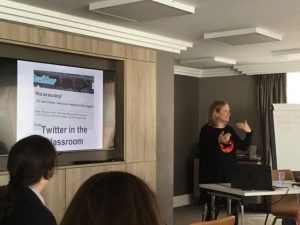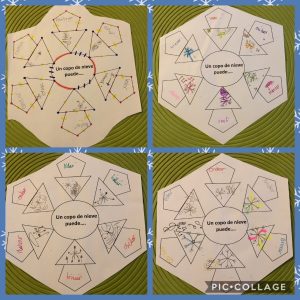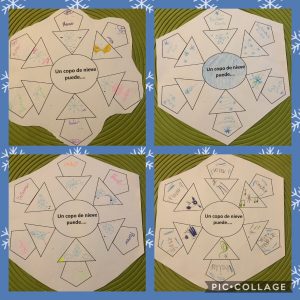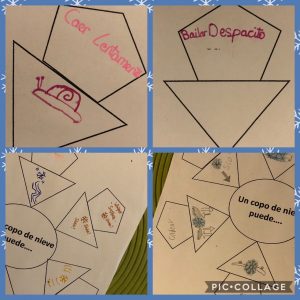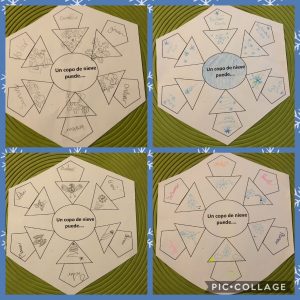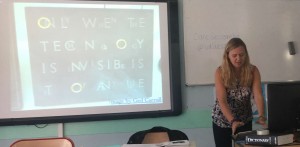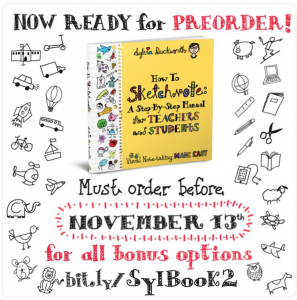 Those of you who follow me on Twitter or have ever met me will know that I like to sketchnote whenever I attend conferences or complete professional development activities. In fact, you’ll find many of them on this website too!
Those of you who follow me on Twitter or have ever met me will know that I like to sketchnote whenever I attend conferences or complete professional development activities. In fact, you’ll find many of them on this website too!
Sketchnotes are rich visual notes created from a mix of handwriting, drawings, hand-drawn typography, shapes, and visual elements like arrows, boxes, and lines. (Mike Rohde)
Well, one of my sketchnote inspirations is Sylvia Duckworth. Her definition:
Sketchnoting, or visual note-taking, is an effective and fun way to take notes using doodles and text. It has many other benefits such as increased focus and engagement in class, improved comprehension and memory retention, helps develop creative thinking skills and allows students an alternative way to display their learning and make connections to course content. It has a calming and relaxing effect too!
You may not have met Sylvia Duckworth; perhaps you’ve never heard the name before, but I’m sure you’ve seen her sketchnotes! Recognise either of these?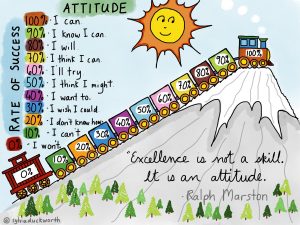
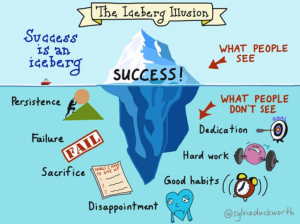
Sylvia collected some of her beautiful sketchnotes in a book nearly two years ago called Sketchnotes for Educators which features 100 of her favourites in print with links to download and print them out for your classroom. Here’s the trailer!
A month or so ago I heard that Sylvia was releasing a new book entitled How to Sketchnote: A step-by-step Manual for Teacher and Students. Very exciting news! Just as exciting was news of #sketchnotefever, a 21 day sketchnote challenge. Each day from October 23rd to November 12th, Sylvia is posting a 3 minute video that shows how to draw icons, fonts, banners and bullets with the aim of building up a visual dictionary for sketchnoting. 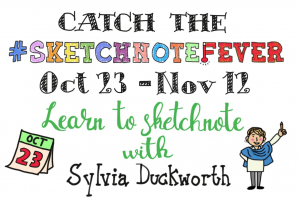
I joined in as I like a challenge and I felt that it would do my sketchnoting a good boost in advance of the Practical Pedagogies conference in Cologne. Each day I’ve had a go at the task and posted my results on Twitter and Instagram. Sylvia loves seeing all the #sketchnotefever posts and is really good at commenting on them all! And she’s really kindly let me have a copy of her new book ahead of publication – and it’s BRILLIANT!
It explains what sketchnoting is, compares analogue (the way I do it) and digital (the way Sylvia does it, using an iPad and Procreate app) sketchnoting and then offers exercises and activities to practice ‘doodling’, build up a vocabulary of visuals, and learn how to do all the ‘other bits’ like banners, bullets and fonts. I’m particularly liking the icon section on p26-27, and will be spending lots of time on p54 practicing animals, and the stick people on p51-2. I may even start a ‘Doodle club’ using it!
So – two bits of advice!
- Use #sketchnotefever as a way of giving sketchnoting a go. It’s a great introduction and by the end you’ll see that you really don’t have to be an artist to do it!
- Get a copy of How to Sketchnote: A step-by-step Manual for Teacher and Students. Whether you’re planning on using it as a tool to help teach your pupils how to sketchnote, or as a personal ‘how to’ manual, it’s well worth the purchase as you get links to images for projection as well as links and QR codes to videos. And if you order before November 13th, you get bonus features too. Click here to find out about it.
PS I’ll post all of my #sketchnotefever sketchnotes at the end of the challenge in one post but check out Twitter or Instagram if you can’t wait! If you search for the hashtag you’ll find lots of other people’s sketches too!
